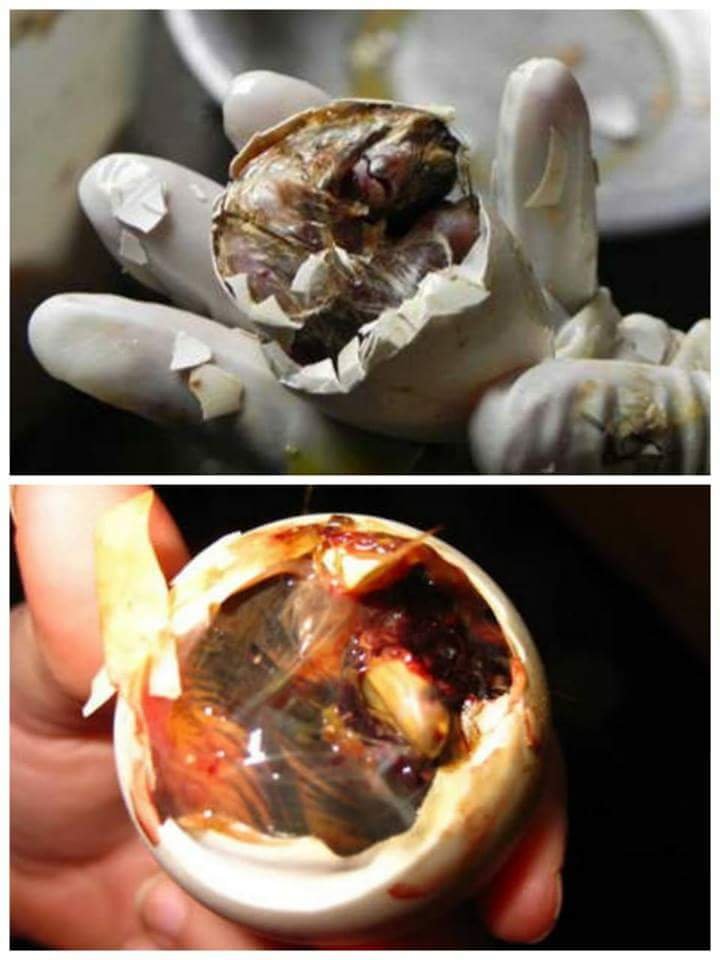
What causes the embryo to die in the shell, when the embryo is perfectly shaped?
Dead in Shell (DIS) or dead embryo in the shell can be caused by many things including:
- Humidity*. The ideal moisture level is 60% to 65%. Humidity is too low will make the membrane contracted so that the embryo as if by wrapped tight by plastic and can not breathe. High humidity is also a problem because it can make embryos "drown" in "air bags". Even if hatch, birds usually look bigger because of "swelling".
- Temperature. * Ideally, temperatures range from 37 ° to 39 ° C. Temperatures that are too low or too high can cause DIS.
- Mal-nutrients * Seen trivial but mal-nutrients in the breeding can also cause DIS. Parents that get enough nutrition will produce healthy eggs and contain enough nutrients for embryo development. Egg yolk which is an embryo food while in the egg contains many nutrients and must meet the needs of the embryo. Here are the effects of deficiencies of some of the nutrients needed by the embryo:
- Vit A: the embryo dies after about 48 hours of incubation because it can not develop.
- Vit D: the embryo dies after 18 - 19 days incubation because the bone and the beak are not well developed.
- Vit E: embryo die after 84 - 96 hours incubation due to bleeding.
- Vit B2: the embryo dies after 60 hours, 14 days and 20 days after incubation because it does not develop with
good - Biotin: the embryo dies after 19 - 21 days incubation due to bone defects
- Vit B12: the embryo dies after 20 days incubation due to bleeding and tissue damage, swelling
body organs and bleeding. - Zinc: the embryo dies before it develops because the organ is not growing properly
Iodine: the embryo dies as the thyroid size shrinks and the hatching time exceeds the normal limit. - Iron: the embryo dies from low haegmolobin so that oxygen does not reach the lungs.
- Cleanliness of cages and nests. * Unclean enclosures and nests may cause infection by bacteria and viruses.
- Excess calcium. * Excess calcium makes the egg shell harder and difficult to solve by the embryo in time.
- Mutations. * There are several mutations that cause the bird's condition to become weak and not exclude its embryo. Example: pale fallow. For the type of mutation that makes the bird condition weak, you can cross it with the wild type, wild color or whatever it is) and then you can expand it through the resulting "split bird".
- Inbreed. * In some cases inbreed can also be a cause of DIS because of the lethal factor.
- Bird maturity level * Birds under the age of one year are generally immature sexually mature.
- Incomplete incubation. * Most commonly occurs in the first time birds have grown. In addition, the choice of nest material is also sometimes influential.
In raising birds, you should not flower your birds because your bird is not a machine. Preferably after 2 or maximum 3 times of incubation period, rest your birds for at least 1 or 2 periods. Simply put it this way, after three times take the child, once istirataht. If one period takes children = 3 months, then in one year the maximum is only raised three times (3x3 = 9 months) and rest once (1x3 = 3 months).
Source
Direct translation without giving credit to the original author is Plagiarism is translating without giving credit to the original author or artist.
Repeated plagiarism is considered spam. Spam is discouraged by the community and may result in action from the cheetah bot.
More information on Image Plagiarism
If you believe this comment is in error, please contact us in #disputes on Discord
Please note that direct translations including attribution or source with no original content is also considered spam.